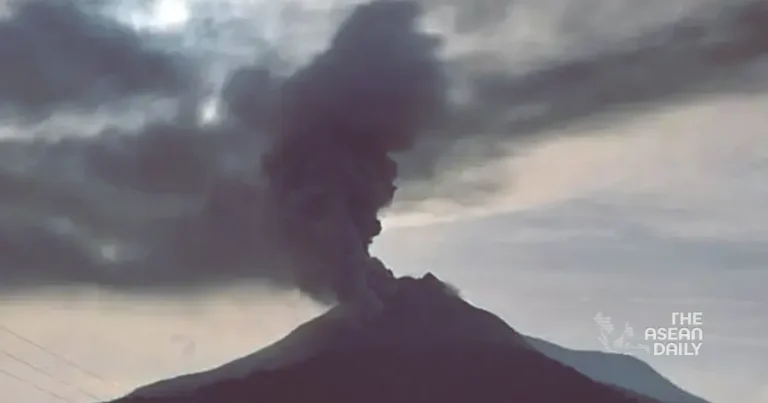30-6-2024 (JAKARTA) Residents and visitors in the vicinity of Mount Lewotobi Laki-Laki on the picturesque island of Flores, Eastern Indonesia, were treated to a dramatic display of nature’s fury as the volcano erupted twice on Saturday (June 29). The Indonesian volcanology authorities have confirmed the occurrence of these two eruptions, which sent thick, dark clouds of volcanic material towering into the air.
The first eruption took place at 11:04 am local time and lasted for nearly 11 minutes, according to a statement released by the Indonesian volcanology agency. The second eruption followed at 2:41 pm, continuing for over 10 minutes and propelling volcanic matter an impressive 900 meters above the crater.
In light of these powerful eruptions, the volcanology agency has issued a stern warning, prohibiting residents and visitors from conducting any activities within a three-kilometer radius of the eruption’s center. The safety of the public remains the top priority as authorities closely monitor the situation.
Mount Lewotobi Laki-Laki, situated on the popular tourist destination of Flores island, has a history of significant eruptions. In January of this year, a series of major eruptions prompted authorities to raise the alert status to the highest level and evacuate at least 2,000 residents from the surrounding areas.
Currently, the volcano is at the second-highest alert level, a testament to the ongoing volatility and potential risks associated with this natural phenomenon.
Indonesia, an archipelago nation comprising thousands of islands, is no stranger to volcanic activity. Its position on the Pacific “Ring of Fire,” an area renowned for intense volcanic and seismic activity, makes it susceptible to frequent eruptions.
The country’s history is marked by several tragic incidents related to volcanic eruptions. In December last year, an eruption at Mount Marapi, one of Indonesia’s most active volcanoes, claimed the lives of at least 24 climbers, most of them university students.
More recently, in May, heavy rains washed volcanic material from Mount Marapi into residential areas, resulting in a devastating loss of more than 60 lives as homes were swept away by the deadly flow.




